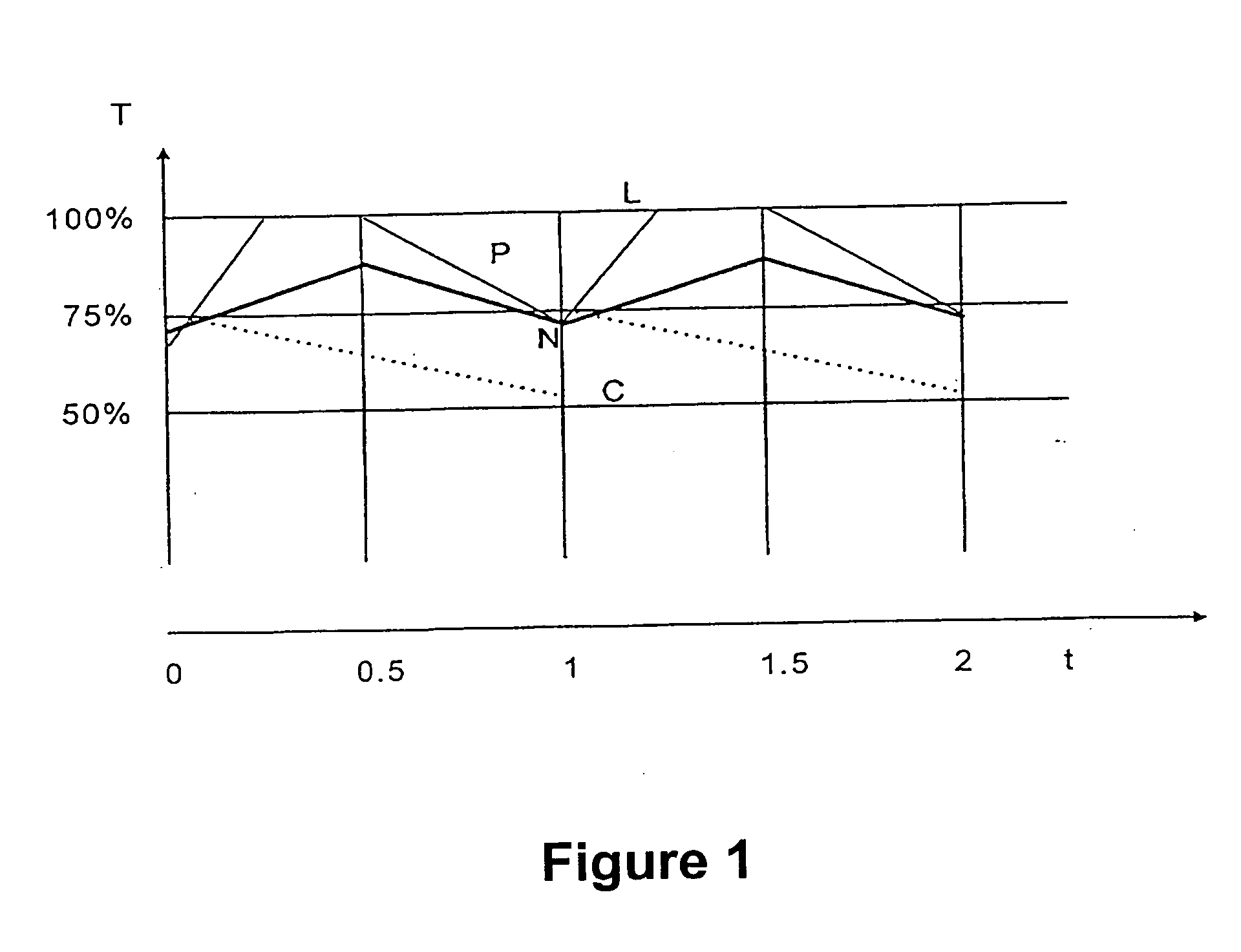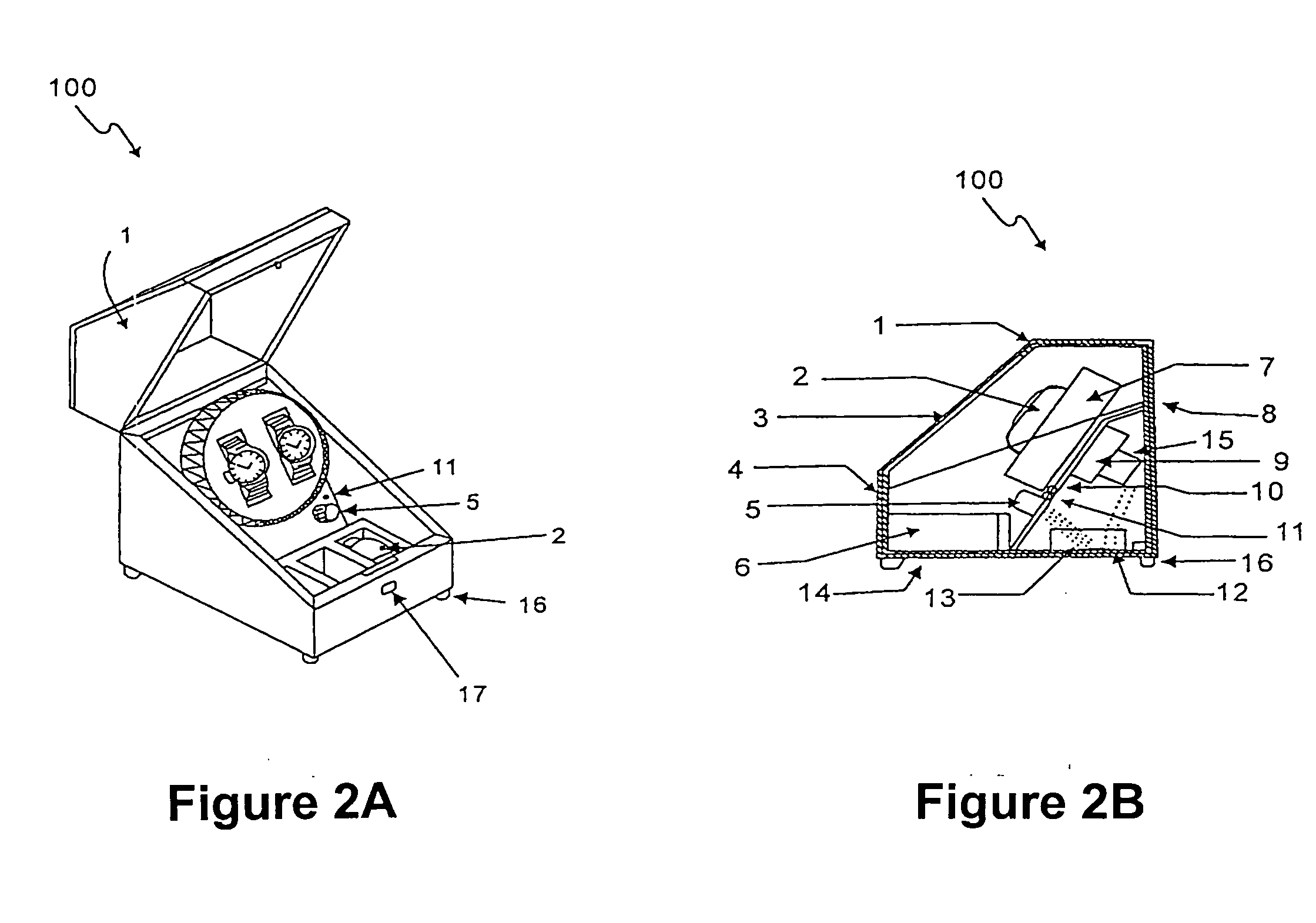Watch-winding apparatus
a technology of automatic winding and watch, which is applied in the direction of electric winding, instruments, and watches to cease operation, can solve the problems of affecting the accuracy of the watch, affecting the resiliency of the apparatus, and the inability to adjust the time, so as to reduce the noise of operation, facilitate mounting and dismounting, and facilitate the effect of showing orientation
- Summary
- Abstract
- Description
- Claims
- Application Information
AI Technical Summary
Benefits of technology
Problems solved by technology
Method used
Image
Examples
Embodiment Construction
[0025]FIG. 1 is a coordinate graph for showing the main-spring tension variation for different clocks / watches. The abscissa represents time (t), the unit is (day). The ordinate represents tension (T) in percent, the horizontal line (L) represents fully wound (100%) of any main-spring. The dotted line (C) represents the tension variation of the main-spring of a chronometer (clock). Typically, the captain winds the chronometer (or clock) once every day to a spring tension of, say, 75%; after the clock runs 24 hours, the tension is reduced to 50%. Then the captain is rewound to 75%. Line (C) accordingly has a shape of saw-teeth. For accurate timing, any main-spring is never permitted to be fully wound. Therefore, we can see in FIG. 1 that the dotted line (C) will never touch the horizontal line (L).
[0026] In FIG. 1, the thin solid line (P) represents the tension variation of the main-spring of a self-winding watch wound by representative prior art apparatus in a watch shop under typic...
PUM
 Login to View More
Login to View More Abstract
Description
Claims
Application Information
 Login to View More
Login to View More - R&D
- Intellectual Property
- Life Sciences
- Materials
- Tech Scout
- Unparalleled Data Quality
- Higher Quality Content
- 60% Fewer Hallucinations
Browse by: Latest US Patents, China's latest patents, Technical Efficacy Thesaurus, Application Domain, Technology Topic, Popular Technical Reports.
© 2025 PatSnap. All rights reserved.Legal|Privacy policy|Modern Slavery Act Transparency Statement|Sitemap|About US| Contact US: help@patsnap.com



